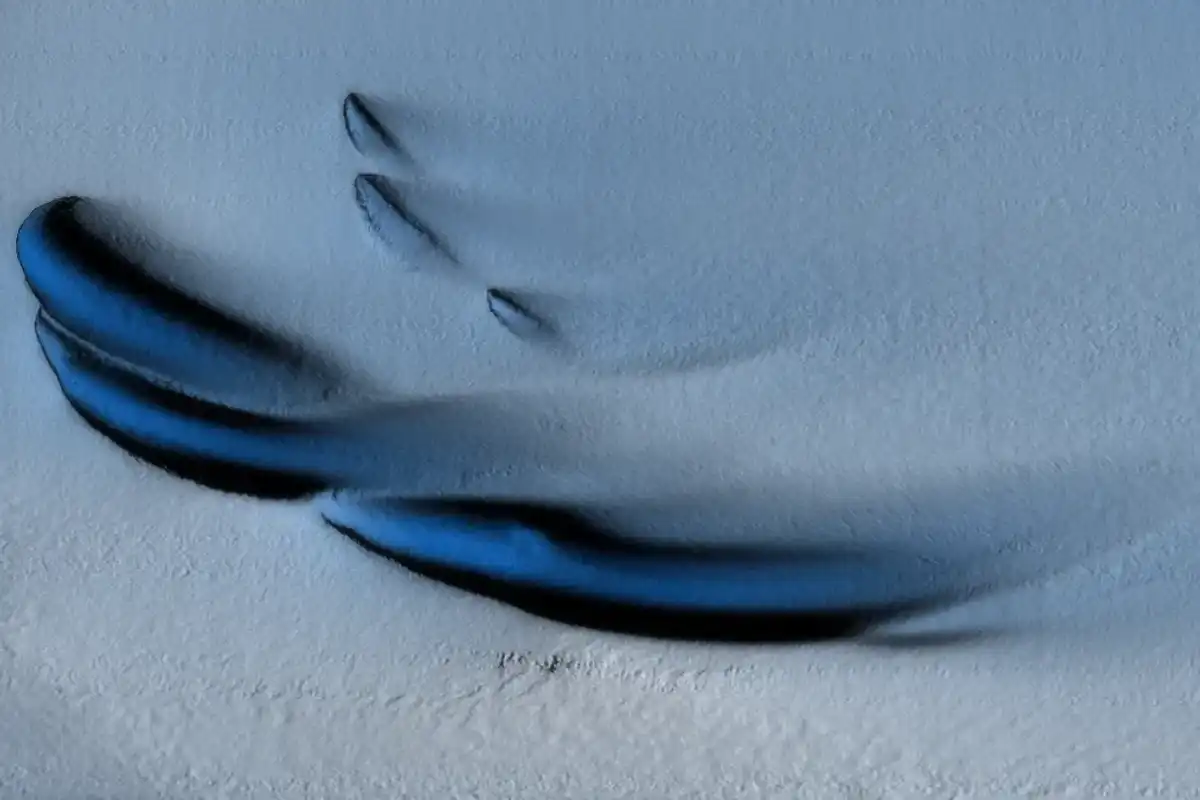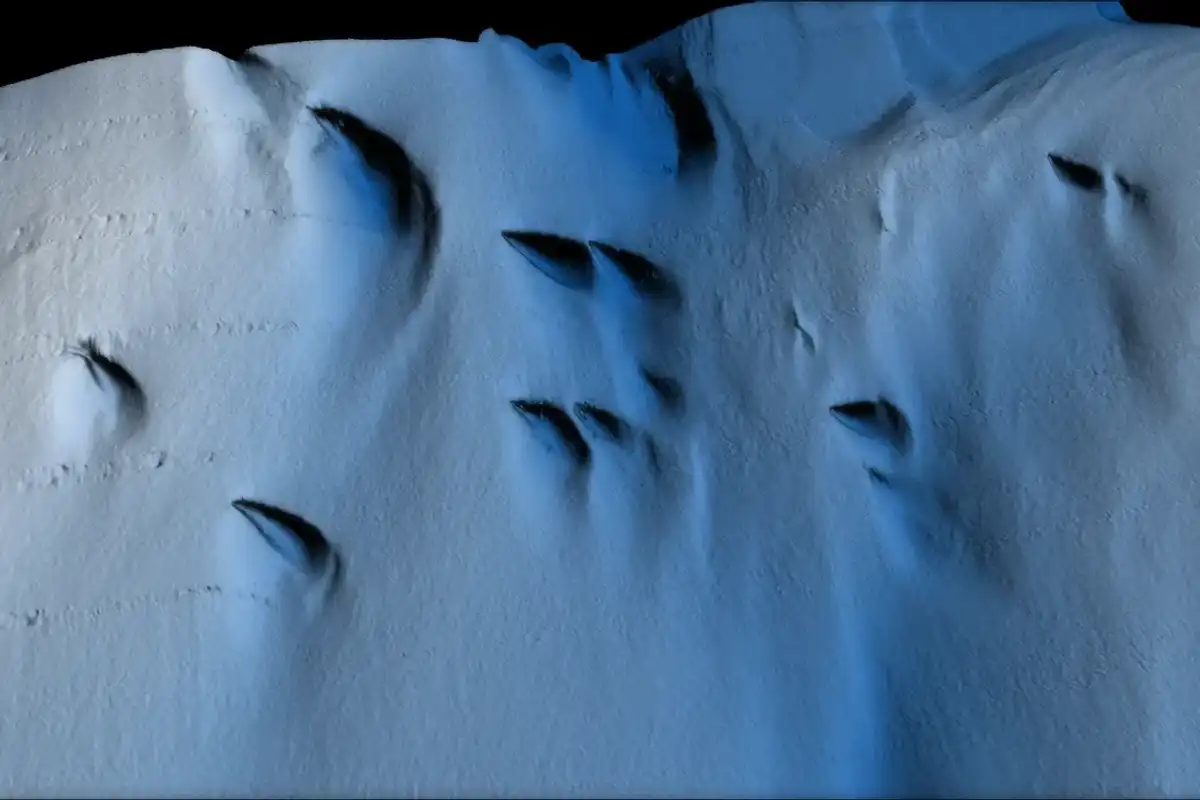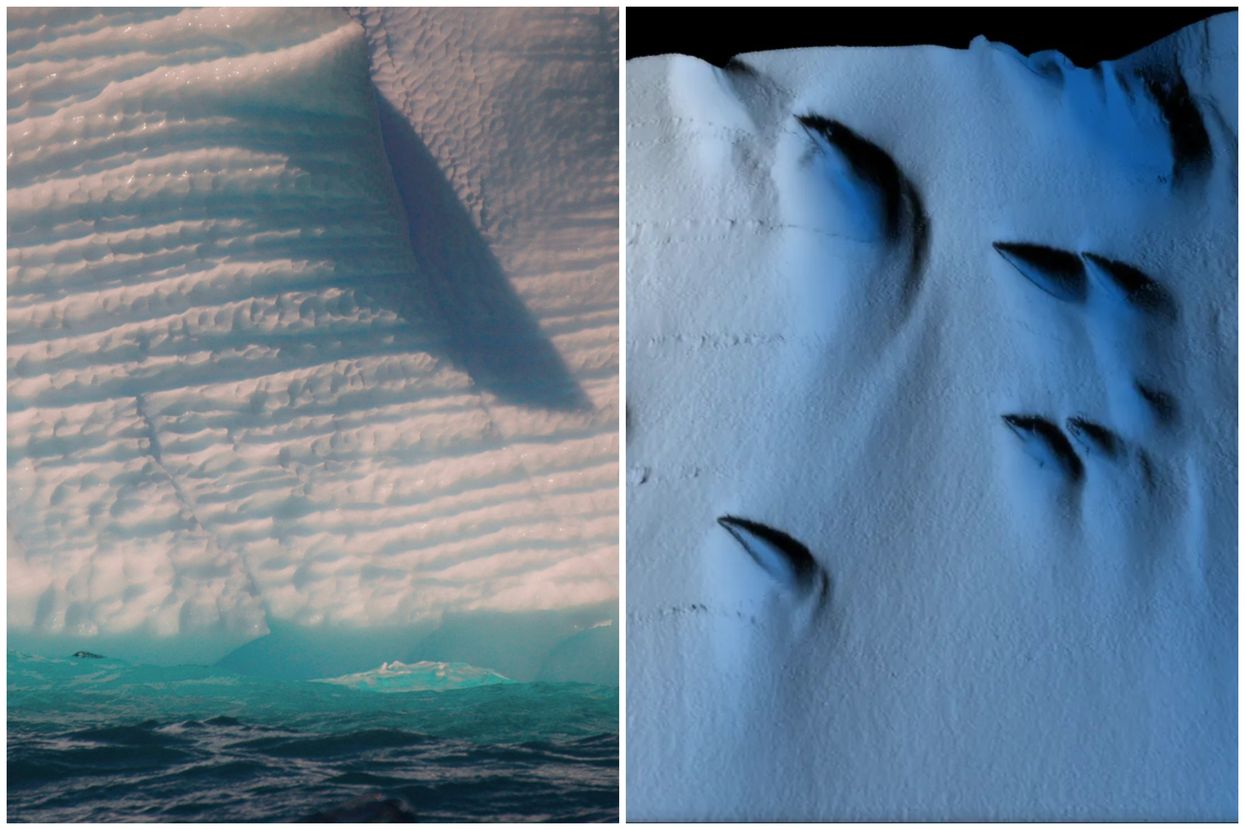Harriet Brewis
Jul 07, 2025
Discover This Amazing Subglacial, Liquid Water Lake In Antarctica
ZMG - Amaze Lab / VideoElephant
Strange structures up to 1,300 feet (around 400 metres) long have been discovered deep beneath the ice in Antarctica.
The never-before-seen shapes were uncovered when a remotely operated vehicle (ROV) dove 10 miles (17 kilometres) below the Dotson Ice Shelf, in the west of the continent, and travelled more than 600 miles (1,000 kilometres) along the underside of the ice, Live Science reports.
The Dotson Ice Shelf is a 30-mile-wide (50 kilometre) chunk of floating ice which is seven times the size of New York City.
It is part of the West Antarctic ice sheet, which is home to glaciers that are breaking up (a process known as calving) at such a dramatic rate, they could cause sea levels to rise by approximately 11 feet (3.4 metres) if they bring about the collapse of the entire ice sheet.
Studies have shown that steady erosion is wearing away the edges of the ice shelf, with warm ocean water infiltrating its undersides. This is dislocating it from the land, making its eventual collapse inevitable.
The research, published on 31 July last year, has shed light on these processes by creating the most detailed picture of the shelf’s underbelly.

The survey conducted by the aforementioned ROV revealed that the glacier is, as expected, melting fastest at the points where underwater currents are eroding its base.
However, unexpectedly, it also showed that the glacier’s base is not smooth, as experts assumed it would be, but is, instead, made up of a strange network of peaks and valleys.
More confounding still is that emerging from these peaks and valleys are teardrop-shaped features, resembling sand dunes, which are hundreds of feet long.
The team of scientists believe that these enigmatic structures are created as water moves across the glacier’s underside, in sync with the Earth’s rotation, leading to uneven melting.
"If you look closely at the shapes they are not symmetrical, they are bent a bit like blue mussels, and the reason for that asymmetry is Earth's rotation," Anna Wåhlin, a professor of oceanography at the University of Gothenburg, told Live Science.
"Water moving on Earth is subject to something called the Coriolis force, which is acting to the left of the direction of motion in the Southern Hemisphere,” she explained.
According to her team’s analysis, this force is balanced out by friction in the ice, resulting in a spiral flow pattern called an Ekman spiral.
These are most often seen when winds travel over surface water, but they can also form when water travels over ice.

The researchers returned to the region with their ROV in January 2024 with the hope of following up on their original survey, which was conducted in 2022.
Unfortunately, the submersible disappeared beneath the ice shelf and will never be seen again.
The team now aim to launch a new sub to continue their investigation of the icy, uncharted depths.
"In order to understand the ice cycle in Antarctica and how ice gets from the continent into the ocean we need to understand how it melts from beneath, a process that is equally important as calving for moving land ice to the ocean," Wåhlin noted.
"It takes a lot of energy to melt ice, so all the ice in Antarctica is like a giant temperature stabiliser and an important part of Earth's climate system," she added.
"If the Antarctic ice sheet were to end up in the ocean at high rates it can potentially influence sea level rise, so if we learn the upper and lower limits we can also put limits on future sea level rise."
Why not read...
Could plastic ice form in oceans of alien planets?
Scientists have discovered a way to 'grow' ice and refreeze Arctic sea
This article was first published on August 6, 2024
Sign up for our free Indy100 weekly newsletter
How to join the indy100's free WhatsApp channel
Have your say in our news democracy. Click the upvote icon at the top of the page to help raise this article through the indy100 rankings
Top 100
The Conversation (0)














